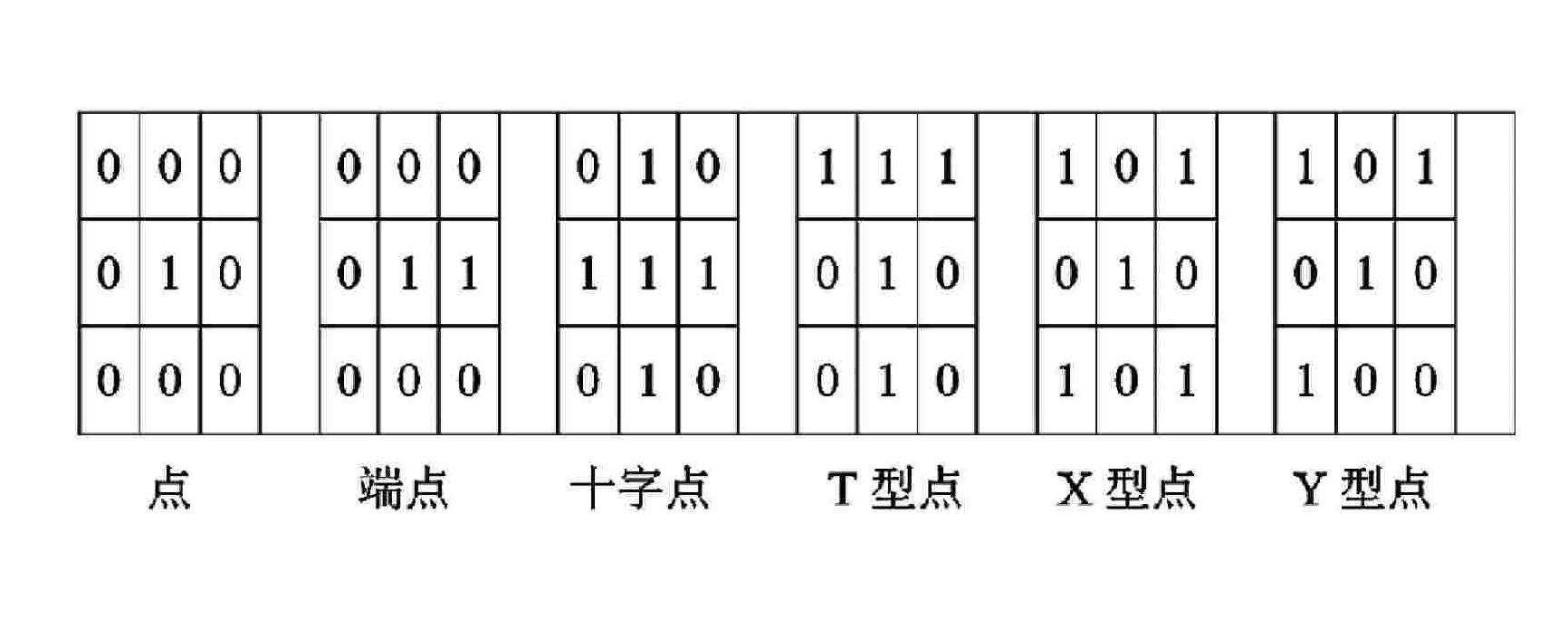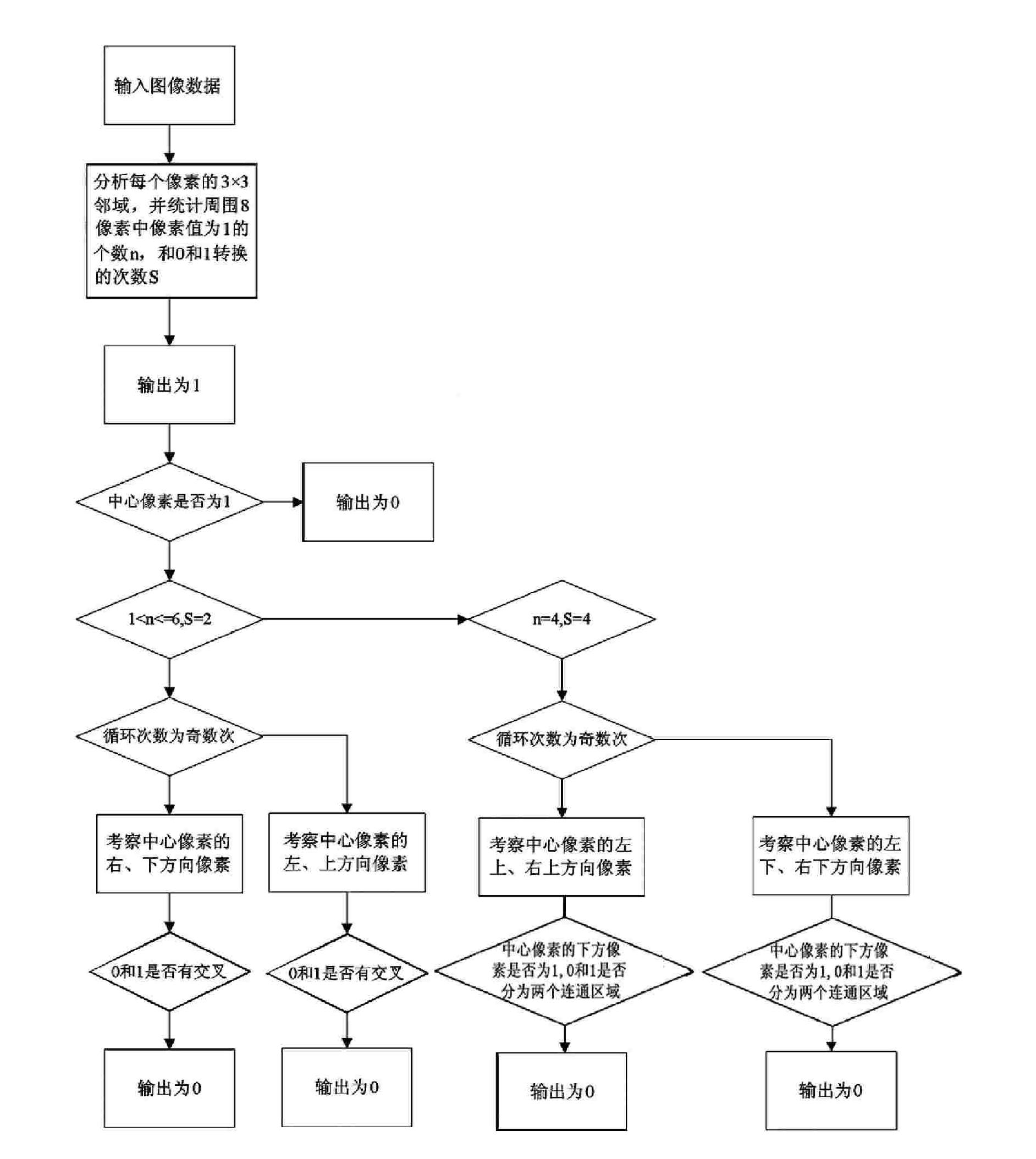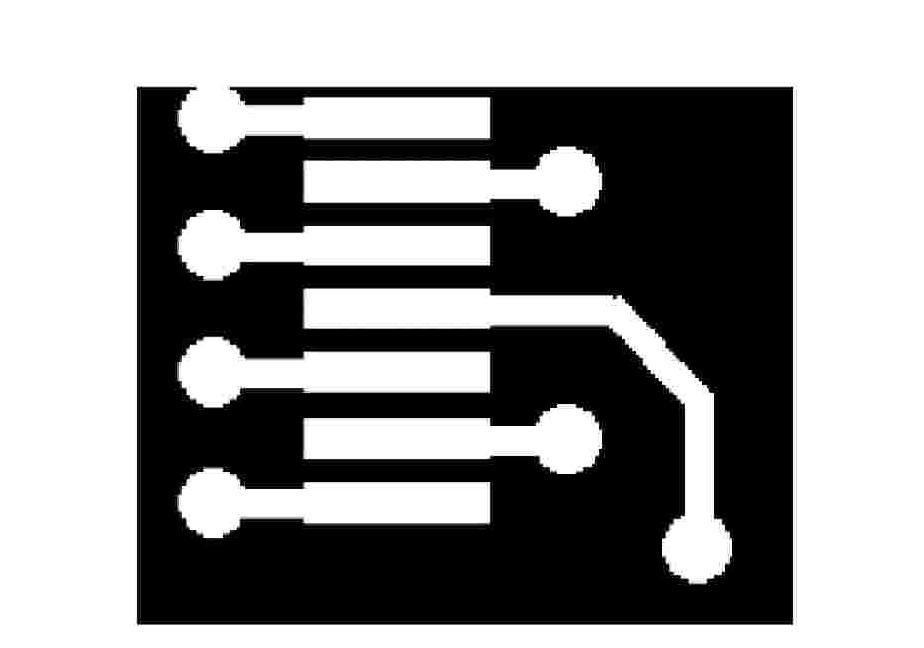Printed circuit board image skeletonization method based on FPGA
A technology of printed circuit boards and image skeletons, applied in the direction of measuring electricity, measuring electrical variables, measuring devices, etc., can solve the problems of time-consuming detection, loss of image features, and difficulty in real-time processing, so as to improve processing speed and release software resources. Effect
- Summary
- Abstract
- Description
- Claims
- Application Information
AI Technical Summary
Problems solved by technology
Method used
Image
Examples
Embodiment Construction
[0028] see example Figure 4 :
[0029] Step 1, input image data.
[0030] Step 2, analyze the 3 × 3 neighborhood of each pixel, and count the number n of the surrounding 8 pixels to the pixel value of 1, and the number of conversions S between 0 and 1, the output is 1, and the pixels that are reserved as 1 are counted.
[0031] Step 3, determine whether the center pixel is 1, if the output is 0, delete the center pixel.
[0032] Step 4, when 1
[0033] Step 5, when 1
PUM
 Login to View More
Login to View More Abstract
Description
Claims
Application Information
 Login to View More
Login to View More - R&D
- Intellectual Property
- Life Sciences
- Materials
- Tech Scout
- Unparalleled Data Quality
- Higher Quality Content
- 60% Fewer Hallucinations
Browse by: Latest US Patents, China's latest patents, Technical Efficacy Thesaurus, Application Domain, Technology Topic, Popular Technical Reports.
© 2025 PatSnap. All rights reserved.Legal|Privacy policy|Modern Slavery Act Transparency Statement|Sitemap|About US| Contact US: help@patsnap.com



